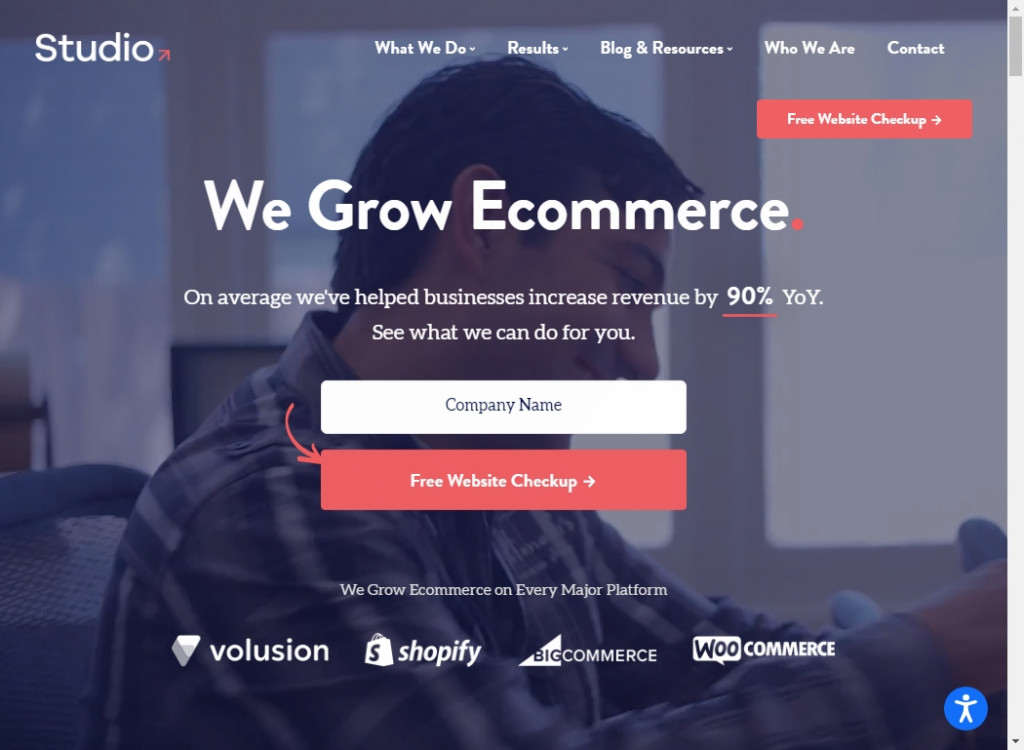How a Clean and Simple Website Design Can Enhance Your Site’s Usability
How a Clean and Simple Website Design Can Enhance Your Site’s Usability
Blog Article
The Ultimate Overview to Modern Internet Site Layout Trends
In the ever-evolving electronic landscape, contemporary internet site layout patterns play a critical duty in shaping customer experience and involvement. From the rise of minimal style concepts that focus on simpleness to the effect of bold typography in defining brand identification, each aspect contributes to a cohesive on the internet existence.
Minimalist Style Principles
Minimalist layout concepts stress the idea that much less is much more, supporting for simpleness and functionality in visual communication. This strategy remove unnecessary components, focusing rather on necessary components that communicate the intended message properly. By focusing on clarity, minimal style boosts individual experience, enabling site visitors to navigate sites easily.
Core tenets of minimal design consist of making use of enough white space, which develops a sense of equilibrium and company. This adverse space not just directs the viewer's interest to vital components yet additionally cultivates a calming aesthetic ambience. Additionally, a restricted color combination is usually utilized, using soft hues or single plans to preserve aesthetic cohesion and protect against overwhelming the individual.
Typography plays an essential function in minimal style, where clear typefaces are selected for their simpleness and efficiency in communicating web content. Eventually, minimal design concepts cultivate a focused atmosphere that motivates individuals to involve with the material, improving the total effectiveness of modern-day internet site layout.
Bold Typography Choices
Embracing bold typography choices has come to be a specifying quality of modern-day internet site design, as it successfully catches attention and conveys solid messaging. Designers are progressively utilizing typography not just as a useful element however as an essential visual element that improves the general aesthetic and individual experience.

In addition, the juxtaposition of vibrant typography with minimalist design concepts allows for striking contrasts, improving readability while maintaining visual allure. Making use of whitespace around strong text additionally stresses its significance, guaranteeing that the message reverberates with the audience.
As digital landscapes become extra affordable, leveraging bold typography enables brands to separate themselves and leave a lasting impact. The careful selection of font styles and their application can evoke emotions, develop tone, and drive activity, making strong typography an essential device in contemporary web site design. Inevitably, it is an effective way to boost storytelling and make certain that key messages are not only seen yet also really felt.
Receptive and Mobile-first Design
Mobile-first and responsive layout has emerged as a vital concept in modern site advancement, reflecting the boosting reliance on smart phones for accessing on the internet web content. As individual actions shifts in the direction of mobile surfing, developers should prioritize creating experiences that adjust effortlessly throughout different screen dimensions and resolutions.
A receptive style makes sure that a website automatically adjusts its layout, pictures, and functionality based on the device being utilized. This strategy boosts user experience by giving regular navigation and readability, regardless of whether the site visitor gets on a tablet computer, desktop, or smart device computer. Moreover, mobile-first design supporters for establishing internet sites at first for smaller displays, subsequently scaling as much as bigger screens. This method encourages a much more structured and effective layout process, focusing on vital material and capability first.
Carrying out responsive and mobile-first principles not just provides to customer preferences however likewise lines up with seo (SEO) methods. Significant internet search engine, like Google, prioritize mobile-friendly web sites in their positions, making it vital for businesses to embrace these layout methods. In a competitive electronic landscape, welcoming responsive and mobile-first layout is not simply an option; it is crucial for making certain availability and engagement with a varied audience.
Involving Microinteractions
Microinteractions play a crucial duty in boosting user interaction and overall internet site experience, specifically in the context of mobile-first and receptive design. These subtle layout aspects give prompt responses to individuals, making communications more satisfying and intuitive. Examples include switch computer animations, alert informs, and filling signs, which not just guide users yet also create a feeling of connection with the interface.
Integrating engaging microinteractions can substantially enhance usability by lowering cognitive lots. When customers receive visual or acoustic feedback upon carrying out activities, such as clicking a button or submitting a kind, they feel extra confident in their options. published here This promotes a smoother navigating experience, inevitably boosting individual retention.

As site design patterns remain to advance, the relevance of microinteractions can not be overstated. They work as the refined yet effective touchpoints that change regular interactions into extraordinary experiences, thus raising the overall efficiency of contemporary website design.
Lasting Website Design Practices
Lasting internet layout discover here techniques are coming to be significantly important as the electronic landscape grows and environmental problems climb. Developers and programmers are recognizing their duty to create sites that not just offer user demands yet also minimize ecological impact. This method encompasses several key methods.
Firstly, maximizing energy usage is critical. Websites need to be created to load quickly and successfully, which minimizes web server energy usage and enhances individual experience. Strategies such as photo compression, minimizing HTTP requests, and using modern coding methods contribute significantly to this objective.
Second of all, selecting green hosting suppliers is vital - website design. Lots of organizing companies are now powered by sustainable energy sources, enabling websites to operate in a more lasting way. This option mirrors a commitment to minimizing carbon footprints
Additionally, embracing a minimal design can navigate to these guys enhance sustainability. Less elements on a page lead to much less information transfer, which not only accelerates loading times yet also saves resources.
Last but not least, promoting digital availability ensures that websites reach a broader target market without unnecessary bloat, lining up customer experience with ecological duty. By incorporating these lasting practices, web designers can add favorably to both user engagement and the world's wellness.
Final Thought
In summary, contemporary site layout trends highlight the combination of minimalist principles, bold typography, and responsive style to enhance user experience. Taking on these fads is important for creating impactful electronic experiences that resonate with customers in a progressively affordable online landscape.
In the ever-evolving electronic landscape, modern-day site style trends play an essential function in forming user experience and involvement. By prioritizing clarity, minimal style enhances user experience, permitting site visitors to browse web sites effortlessly.
Ultimately, minimalist layout concepts cultivate a concentrated atmosphere that encourages individuals to involve with the web content, boosting the overall efficiency of modern internet site design.Microinteractions play an essential function in boosting individual interaction and general internet site experience, especially in the context of receptive and mobile-first design.In recap, modern site layout trends emphasize the combination of minimal principles, strong typography, and receptive style to enhance customer experience.
Report this page